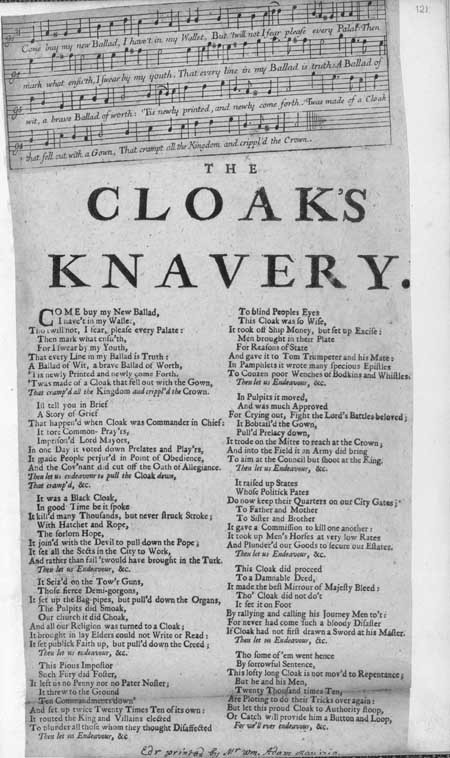Commentary
This ballad begins: 'Come buy my New Ballad, / I have't in my wallet, / Tho twill not, I fear, please every Palate: / Then mark what ensu'th . . . ' This broadside is especially interesting and rare, since it also contains the musical score for the ballad. At the very bottom of the sheet, a short note states that the broadside was printed by Mr William Adam in May 1719, while the accompanying letters 'Edr' suggest that it was probably published in Edinburgh. This ballad appears to be an attack on the Covenant Movement and the Protestant Succession, written by someone with strong Catholic sympathies. The image of the black cloak that dominates the ballad most likely symbolises some ritual from a religious ceremony. There are also references to the ending of Common Prayers, which Charles I had introduced in 1637. In addition to the religious symbolism, the ballad also contains references to the symbols of monarchy, such as the mitre and the crown. The references in verse four to the plundering of churches, also supports the interpretation that the ballad is a protest against the dominance of Protestantism. Early ballads were dramatic or humorous narrative songs derived from folk culture that predated printing. Originally perpetuated by word of mouth, many ballads survive because they were recorded on broadsides. Musical notation was rarely printed, as tunes were usually established favourites. The term 'ballad' eventually applied more broadly to any kind of topical or popular verse.
View Transcription | Download PDF Facsimile
|
 |
Date published:
1719 shelfmark: Ry.III.a.10(121)
 View larger image
View larger image
|


